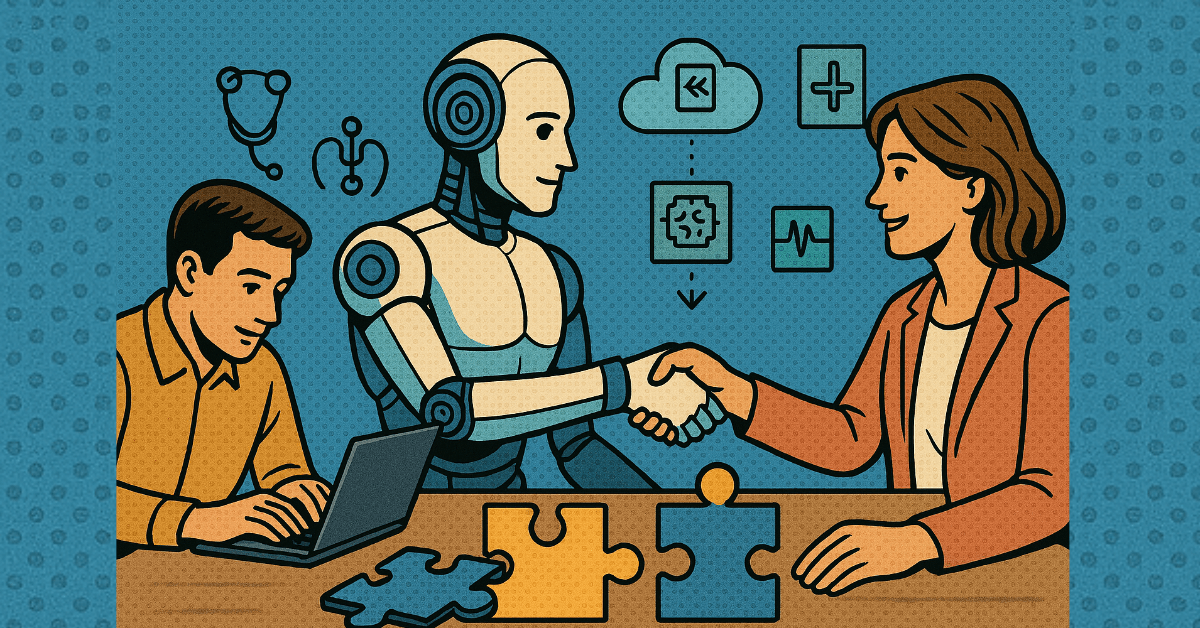In today’s competitive business environment, productivity is no longer just a performance metric—it is a survival strategy. As organizations seek to maximize efficiency and minimize waste, they are turning to a powerful new ally: Generative Artificial Intelligence (AI). From automating mundane tasks to enhancing decision-making and creativity, generative AI is transforming the workplace across all sectors.
Table of Contents
This blog explores how companies are using generative AI to overcome productivity bottlenecks, streamline workflows, and reshape the future of work.
What is Generative AI?
Generative AI is a subset of artificial intelligence that focuses on creating content such as text, images, code, designs, and even data simulations. It relies on advanced machine learning models trained on vast datasets to generate new outputs based on user prompts or contextual inputs.
Unlike traditional AI, which is built to follow rules or analyze patterns, generative AI can produce entirely new content, mimicking human creativity and intelligence. This has opened up transformative opportunities across industries including technology, finance, healthcare, education, and manufacturing.
1. Automating Repetitive and Time-Consuming Tasks
One of the biggest workplace challenges is the volume of repetitive tasks that drain employees’ time and energy. Generative AI is addressing this by taking over administrative functions like email drafting, meeting summaries, scheduling, and document creation.
Example:
At Deloitte, an internal generative AI tool called PairD is helping auditors write code, analyze data, and generate detailed reports. Within a short period, the number of users tripled, demonstrating how rapidly employees are embracing AI tools that enhance their daily productivity.
By automating routine tasks, businesses are enabling employees to focus on high-impact work that requires creativity, strategy, and human judgment.
2. Enhancing Customer Service and Support
Customer support is a key area where generative AI is driving measurable productivity improvements. AI-powered chatbots and support assistants can now respond to customer queries, draft replies, and suggest real-time answers to human agents.
Case Study:
A research study involving more than 5,000 customer support agents showed a 15 percent increase in productivity when they used generative AI tools. The improvements were especially notable among less experienced employees, who benefited from AI-assisted coaching and error reduction.
By reducing response time and improving service quality, generative AI tools are boosting both customer satisfaction and operational efficiency.
3. Supercharging Decision-Making with Smart Data Insights
Businesses generate and manage massive amounts of data—but unlocking value from that data is a challenge. Generative AI is helping organizations analyze complex data sets, visualize trends, and generate strategic insights faster than ever before.
Use Case:
Project managers can now use generative AI to identify skills gaps, suggest team configurations, and flag resource inefficiencies. By evaluating historical performance and real-time inputs, AI systems help teams plan better and act faster.
Generative AI doesn’t just crunch numbers; it turns data into action plans.
4. Powering Innovation and Creative Output
Creativity isn’t limited to artists and designers. Every industry thrives on innovative thinking—and generative AI is making it easier to explore ideas, prototypes, and iterations at scale.
Example:
Canva’s Visual Suite 2.0 integrates AI-powered tools that allow users to design presentations, social media posts, and even software interfaces with simple text prompts. This democratization of creativity means that even non-designers can produce professional-quality content in minutes.
This is especially valuable in marketing, advertising, software development, and education—fields that demand constant content creation and iteration.
5. Supporting Personalized Learning and Development
Workplace productivity isn’t just about tools—it’s also about people. Upskilling and reskilling are essential for keeping pace with technological change. Generative AI is playing a growing role in creating adaptive learning experiences that are tailored to individual needs.
Insights from PwC and the World Economic Forum:
AI-driven learning platforms can assess employee performance, identify knowledge gaps, and generate personalized training paths. This not only accelerates learning but also improves retention and engagement.
With AI support, companies can transform traditional training into continuous, on-demand development programs that scale with workforce needs.
6. Transforming Team Collaboration and Communication
Generative AI tools are redefining how teams collaborate. From automated meeting notes and real-time transcription to AI-generated summaries and translation tools, these technologies are removing communication barriers and improving alignment.
Tools like Notion AI, Otter.ai, and Microsoft 365 Copilot are enabling teams to collaborate across time zones and languages, helping everyone stay on the same page—literally.
7. Building Smarter, AI-Integrated Workflows
Forward-thinking organizations are not just using AI tools in isolation—they are integrating generative AI into core business systems and platforms. Whether it’s an AI-enhanced ERP system, CRM, or supply chain management software, the goal is to embed intelligence directly into workflows.
These integrations enable real-time monitoring, proactive decision-making, and process optimization—turning reactive operations into predictive, responsive systems.
Challenges and Considerations
While the benefits are immense, organizations must also navigate challenges such as:
- Ensuring data privacy and security
- Preventing bias in AI-generated content
- Managing workforce transition and change
- Maintaining human oversight and accountability
- A responsible AI strategy is essential to unlocking productivity while safeguarding trust and compliance.
Conclusion: Productivity Reimagined with Generative AI
Generative AI is not just a productivity enhancer—it’s a catalyst for workplace transformation. By automating repetitive tasks, improving collaboration, and empowering innovation, it is enabling businesses to work smarter, faster, and more creatively.
As organizations continue to adopt and scale generative AI solutions, they are gaining a critical edge in the race for efficiency, agility, and growth.
The future of work is not just human or machine—it’s human plus machine. And that’s where productivity potential reaches new heights.





